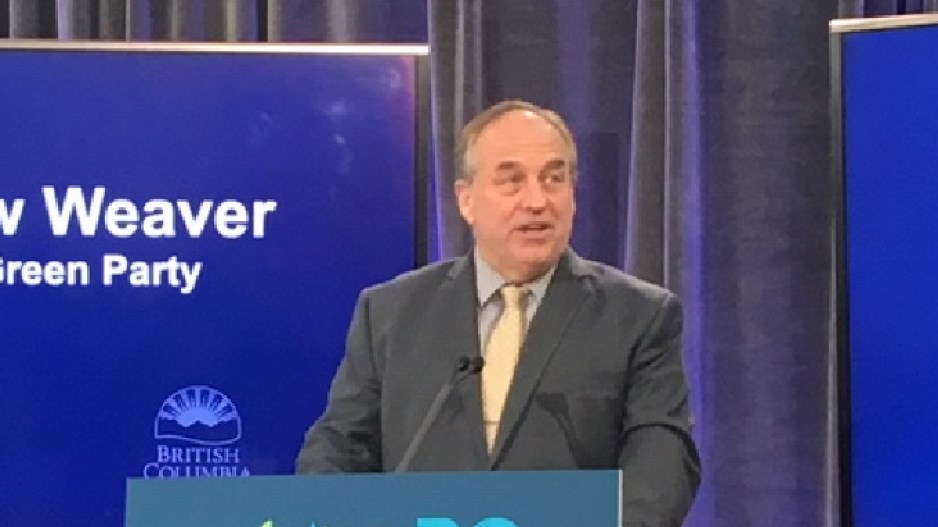BC is hoping to win back its title as a climate change leader with an aggressive plan to reduce greenhouse gas emissions by 40% in just 12 years – a plan that will require all British Columbians to go on a carbon diet.
Environmental groups like the David Suzuki Foundation, Sierra Club and Pembina Institute are applauding last week’s launch of the CleanBC climate change and energy plan, but so is the Business Council of BC (BCBC), which views it as a way to market B.C. products to global customers that increasingly demand low-carbon goods.
“The opportunity is that, if we’re competitive in doing that, we get an economic benefit instead of economic leakage,” said BCBC president Greg D’Avignon.
But the magnitude of the targeted reductions is daunting. Between 2007 and 2015, B.C.’s net emissions declined by only about 3%, according to the provincial government, although the economy grew 17% in the time period.
So getting a 40% reduction in roughly the same time will require a significant decarbonization effort, which the new plan aims to achieve with two main pillars: electrification and lower-carbon fuel standards for transportation fuels and natural gas.
The single biggest emissions reduction would come from industrial electrification, particularly in the oil and gas sector.
“Overall, the strategies outlined in the CleanBC plan are workable, but the expected results are optimistic,” said Werner Antweiler, associate professor at the University of British Columbia’s Sauder School of Business. “I really see most of the worthwhile cost-effective long-term investment in the electricity grid infrastructure.”
Some key CleanBC policies were previously announced, including a zero-emission vehicle mandate that will require 10% of all new car sales by 2025 to be electric or hydrogen fuel cell cars and 100% by 2040.
The plan includes new accountability measures intended to keep the government on track in meeting its targets. Under the Climate Change Accountability Act, the government will have to table annual reports on spending, results and anticipated reductions and publish emissions information as soon as it is available.
The CleanBC strategy calls for an aggressive energy transition, with the use of fossil fuels reduced in many sectors of the economy and replaced with either electricity or renewable fuels, such as renewable natural gas or hydrogen-enriched natural gas.
While the plan may pose challenges for some businesses and sectors, it presents opportunities for others.
FortisBC will be required to provide natural gas that has a 15% renewable fuel content. That will drive up the cost of natural gas for home heating and for industries that use natural gas.
But FortisBC communications manager Sean Beardow said the 15% renewable goal is achievable. And while customers already pay a premium for renewable natural gas, he doesn’t think the new standard will make prices too onerous, because natural gas prices in B.C. are so low.
“It’s really just a slight increase to the cost of natural gas in general, which really remains at all-time lows,” he said.
The demand for renewable natural gas could drive new industries, like the Blue Fuel Hydrogen project, which proposes to produce hydrogen from wind power and water and add it to the natural gas stream, which would count as renewable natural gas.
It will cost more to build new homes under the plan, because they will need to meet stringent new energy efficiency standards. By 2032, all new buildings in B.C. will need to be net-zero. But the home construction sector will benefit from a plan to retrofit up to 70,000 homes by 2030 to make them more energy efficient.
Heat pump sellers and installers will benefit from subsidies that will be offered to homeowners to provide incentives to switch them from natural gas to electricity.
Industries that burn natural gas will continue to pay escalating carbon taxes. But if they meet or beat carbon-intensity benchmarks, they will get a portion of the carbon tax back. And some of the revenue from carbon taxes will go into a new Clean Industry Fund that will help industries switch to low-carbon energy sources.
In announcing the new plan last week, Premier John Horgan tipped his hat to former premier Gordon Campbell, “who had the courage to implement a carbon price.”
“Without that first step, we would not be here today having this discussion about a plan that would address our legislated climate goals,” he said.
While Horgan and BC Green Party Leader Andrew Weaver had opposed Site C, the dam now becomes a centrepiece of the new plan, because it will add much of the additional electricity that will be needed.
Energy, Mines and Petroleum Resources Minister Michelle Mungall said the plan will require about 8% more electricity than is now used. She said B.C. will not need any additional generating capacity for at least a decade.
“Beyond the 2030s, we have to look at what are our generating opportunities,” she said.
While Weaver appears to accept that the LNG Canada project can be accommodated in the new clean growth plan for now, he said any expansion would make it virtually impossible to meet emissions reduction targets.
He added that it will become increasingly difficult to accommodate the industry in the coming decades, because the climate action targets require ever increasing emissions reductions – 40% below 2007 levels in 2030, and 80% by 2050.
“The plan is there to get to 40% reductions with two trains,” Weaver said. “It’s there. However, when you go from 2030 to 2050, you have to come down to 80% reductions.”
See related story: Is LNG wrong target in emissions fight?




